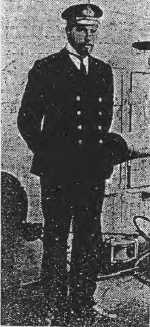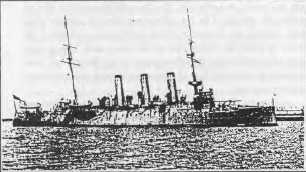- Author
- Loxton, Bruce, Commodore, RAN Rtd
- Subjects
- Ship histories and stories, History - WW1, WWI operations
- Tags
-
- RAN Ships
- None noted.
- Publication
- December 1998 edition of the Naval Historical Review (all rights reserved)
Rear Admiral KA.C. Crutchley V.C., D.S.C., RN was Flag Officer Commanding H.M.A. Squadron – June 1942-June 1944

In late 1917 the German unrestricted submarine campaign was winning the war for Germany. One of the most pressing problems faced by the Admiralty was the prevention of submarines reaching their operating areas from their bases in Germany and Belgium by proceeding north about the British Isles or by the significantly shorter route through the Straits of Dover. The use of the submarine facilities established in Belgium and centred on Bruges, with access to the sea through the ports of Zeebrugge and Ostend, rather than those in Germany, further reduced the route through the Straits and greatly increased the time each submarine using them could spend on patrol.
Until September 1917 the extent to which the Germans were making use of the Straits was not appreciated in London where it was believed that the Dover Barrage, a heavily patrolled system of nets and mines, was effective. The Germans fostered this idea by making the passage of the few submarines using the northern route very obvious. In September Naval Intelligence established the extent to which the Straits were in fact being used. Urgent steps were taken to increase the effectiveness of the Barrage but other measures to reduce the flow of submarines through the Straits were urgently required.

As a result, in mid December 1917, the Admiralty approved plans for the blocking of the ports of Zeebrugge and Ostend and appointed Rear Admiral Roger Keyes to carry them out. The plans for Zeebrugge provided for the use of a combined force of sailors and marines embarked in the old cruiser VINDICTIVE and two ferries to assault at night the mole or breakwater protecting the entrance to the canal. Their purpose was to destroy the batteries covering the approach to the canal. The canal itself was to be blocked by the sinking of three old light cruisers in the entrance. At the same time the entrance to Ostend Harbour was to be blocked by sinking two similar ships, BRILLIANT and SIRIUS.
Because of the need for secrecy it was not practical to make a general call for volunteers. Instead suitable officers from the Grand Fleet were chosen and asked to nominate men whom they thought would be suitable for the operation. Because Keyes regarded service in the block ships as being most dangerous and demanding, he approved and sometimes even nominated those officers himself. He had commanded the battleship CENTURION for a year following Jutland so that one of his first choices was her First Lieutenant, Commander Alfred Godsal, who was appointed to command BRILLIANT. Godsal was told by Keyes that he could ask for two officers that he could trust. He asked for Lieutenant Victor Crutchley, also from CENTURION, only to be told by Keyes that he had already arranged for him to join BRILLIANT as he had formed a very high opinion of Crutchley regarding him as a fine seaman and a thoroughly reliable and competent officer.
The call to join Godsal must have been gratefully received because Crutchley had had a very dull war as a watchkeeper in CENTURION and was seeking a move to a destroyer. He had joined the ship as a Sub Lieutenant in May 1914 and until he left her in March 1918 she had spent the war north of Rosyth. Jutland was hardly compensation because CENTURION’S effort had been limited to five salvoes at maximum range late in the evening and must have been a dreadful anti-climax.
Things did not go quite according to plan at Zeebrugge when the assault was launched on April 23rd (St. George’s Day). Although the approach had been successfully concealed by a combination of smoke and rain until VINDICTIVE was within 300 yards of the mole unexpected difficulties were encountered by the cruiser and her two consorts in berthing on the mole and landing the storming parties. As a result they suffered severe casualties and were unable to take out the batteries. However their furious attack diverted attention away from the approach of the block ships so that two of the three were scuttled in their intended positions. Although their crews suffered losses as they escaped from the harbour, many more than Keyes had thought possible were recovered. Finally VINDICTIVE and the ferries successfully withdrew after recovering the survivors of the storming parties.




